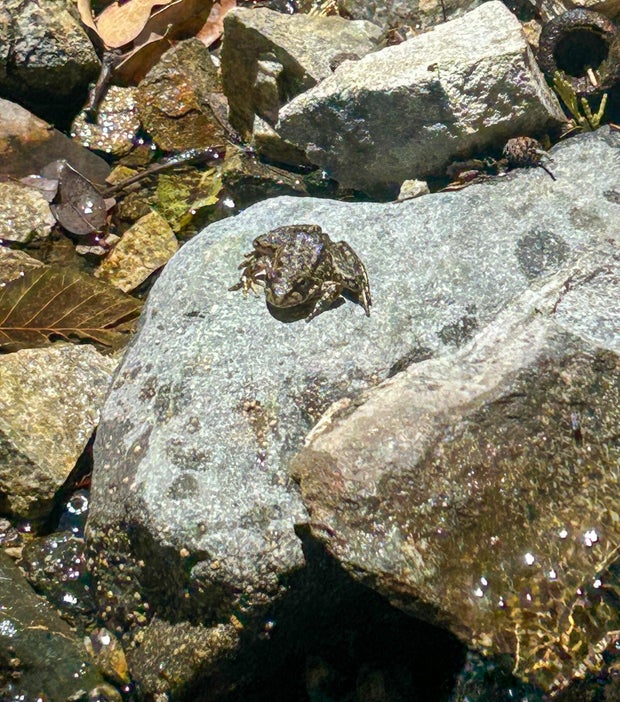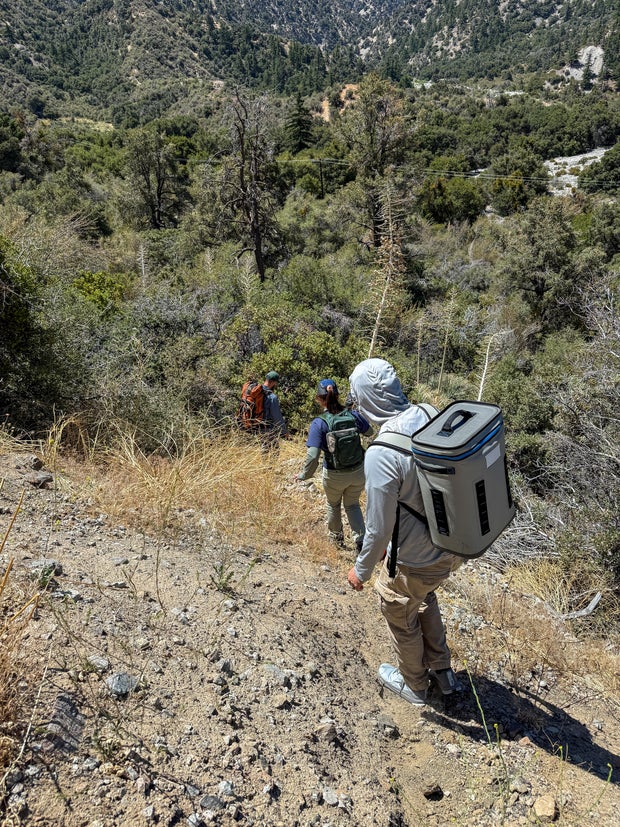Los Angeles Zoo releases nearly 700 endangered frogs and tadpoles in San Gabriel Mountains
Nearly 500 endangered tadpoles and close to 200 frogs that were bred at the Los Angeles Zoo were released back to San Gabriel Mountains streams, where the species once thrived.
Except for 38 frogs that were rescued in 2024, all of the other southern mountain yellow-legged tadpoles and frogs were bred at the zoo. Staff have been breeding the endangered species since 2007 under a program led by the U.S. Geological Survey.
Members of the L.A. Zoo Animal Care team trekked alongside program partners to the undisclosed site where the tadpoles and frogs were released. The exact location of the release is not disclosed for the protection of the animals and their fragile ecosystem.
"This was my second time on a southern mountain yellow-legged frog release," said Luc Myers, an Animal Keeper at the Los Angeles Zoo. "Hiking out on the San Gabriels with a cooler on my back, carrying these precious frogs was nothing short of amazing."
The recovery program was established to bolster southern mountain yellow-legged populations. Frogs bred at the Los Angeles Zoo are hatched and raised with the help of zoo and aquarium partners, including the Aquarium of the Pacific, to ensure their development beyond their most vulnerable state. Once they are mature enough, they are released into natural habitats
Since the program's inception, more than 6,000 L.A. Zoo-bred offspring have been released into the San Gabriel Mountains and surrounding habitats.
"I look forward to seeing these tadpoles and frogs help repopulate these remote areas of the San Gabriel Mountains and to continue innovative breeding and husbandry practices that support this long-running recovery effort with the USGS and partners," said Byron Wusstig, Curator of Ectotherms at the Los Angeles Zoo.
According to the California Department of Fish and Wildlife, mountain yellow-legged frog populations have been declining in the Sierra Nevada and Transverse Ranges since about 1970.
Their decline can be attributed to a variety of factors, including the introduction of non-native fish, pesticides, ultraviolet radiation, pathogens, acidification from atmospheric deposition, nitrate deposition, livestock grazing, recreational activities, and drought.






